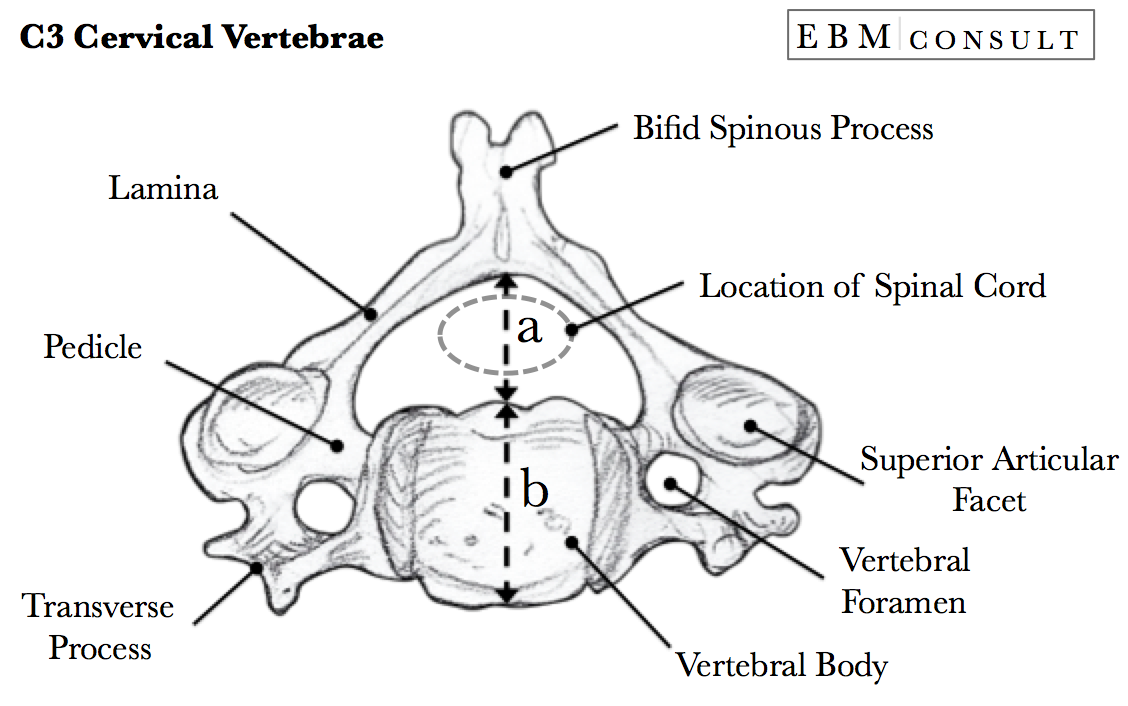Torg Ratio Radiographic Measurement for Determining Spinal Stenosis
Summary:
- The Torg ratio is one of several radiographic methods that can be used to assess the presence of spinal cord stenosis and/or likelihood for spinal cord compression when interpreting an MRI.
- It is known as the spinal canal to vertebral body ratio and is determined by dividing the sagittal diameter of the spinal canal by the sagittal diameter of the vertebral body.
- A ratio of < 0.8 or 0.7 indicates significant spine stenosis and increase risk for neurologic injury.
Torg Ratio
|
|---|


